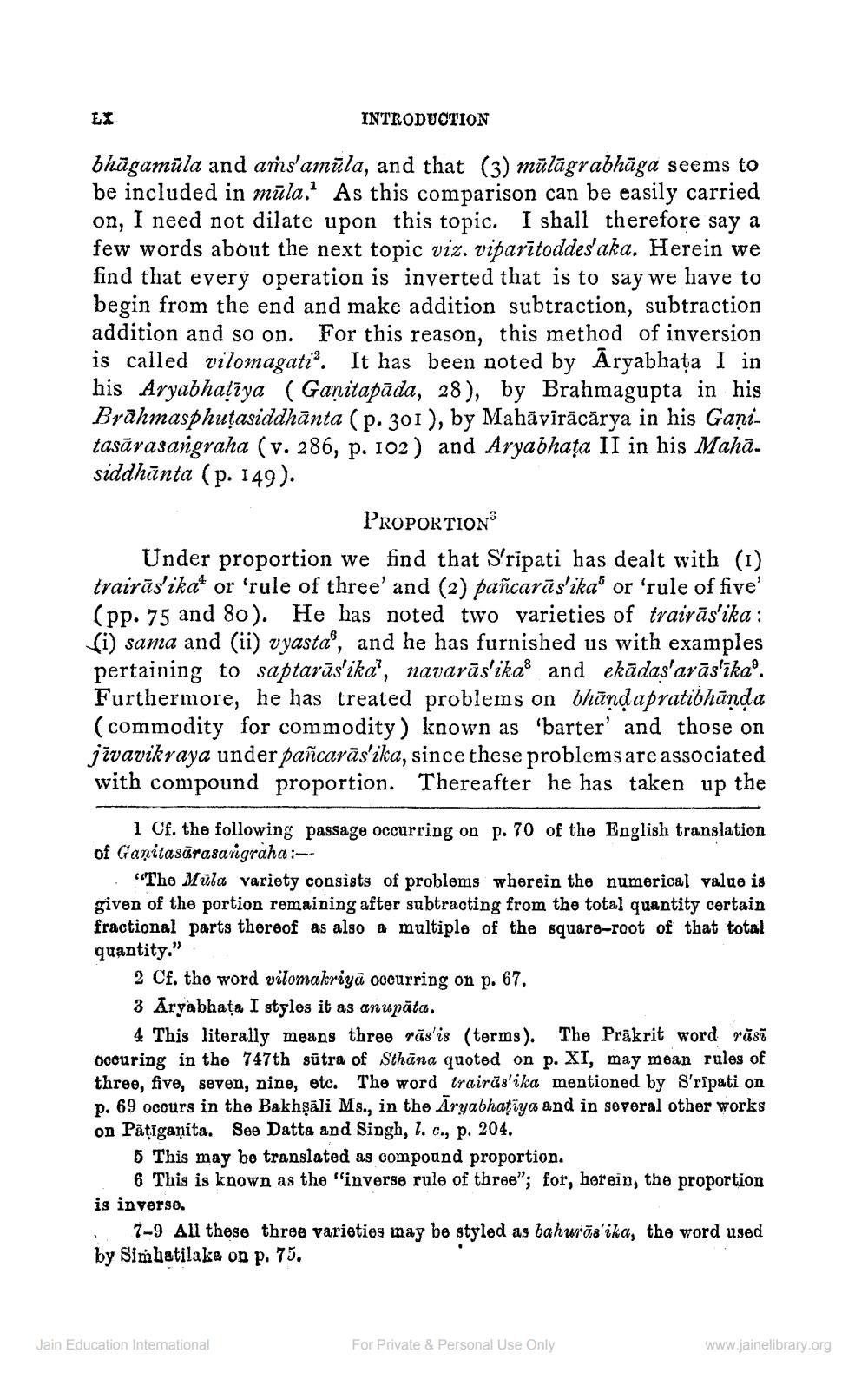________________
LX
INTRODUCTION
bhagamula and aṁs'amula, and that (3) mūlāgrabhāga seems to be included in mula. As this comparison can be easily carried on, I need not dilate upon this topic. I shall therefore say a few words about the next topic viz. viparitoddes'aka. Herein we find that every operation is inverted that is to say we have to begin from the end and make addition subtraction, subtraction addition and so on. For this reason, this method of inversion is called vilomagati. It has been noted by Aryabhața I in his Aryabhatiya (Ganitapada, 28), by Brahmagupta in his Brahmasphutasiddhanta (p. 301), by Mahavirācārya in his Ganitasarasangraha (v. 286, p. 102) and Aryabhata II in his Mahasiddhanta (p. 149).
PROPORTION
Under proportion we find that S'ripati has dealt with (1) trairas'ika' or 'rule of three' and (2) pañcarās'ika" or 'rule of five' (pp. 75 and 80). He has noted two varieties of trairās'ika: (i) sama and (ii) vyasta®, and he has furnished us with examples pertaining to saptaras'ika, navaras'ika and ekādas'aras'ika'. Furthermore, he has treated problems on bhānḍapratibhāṇḍa (commodity for commodity) known as 'barter' and those on jivavikraya under pañcarās'ika, since these problems are associated with compound proportion. Thereafter he has taken up the
1 Cf. the following passage occurring on p. 70 of the English translation of Ganitasarasangraha:--
"The Mula variety consists of problems wherein the numerical value is given of the portion remaining after subtracting from the total quantity certain fractional parts thereof as also a multiple of the square-root of that total quantity."
2 Cf. the word vilomakriya occurring on p. 67.
3 Aryabhata I styles it as anupata.
4 This literally means three ras'is (terms). The Prakrit word rāsī occuring in the 747th sutra of Sthana quoted on p. XI, may mean rules of three, five, seven, nine, etc. The word trairus'ika mentioned by S'ripati on p. 69 occurs in the Bakhṣāli Ms., in the Aryabhatiya and in several other works on Patiganita. See Datta and Singh, l. c., p. 204.
5 This may be translated as compound proportion.
6 This is known as the "inverse rule of three"; for, herein, the proportion is inverse.
7-9 All these three varieties may be styled as bahurās'ika, the word used by Simhatilaka on p. 75.
Jain Education International
For Private & Personal Use Only
www.jainelibrary.org




